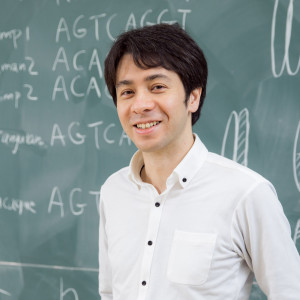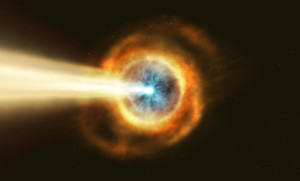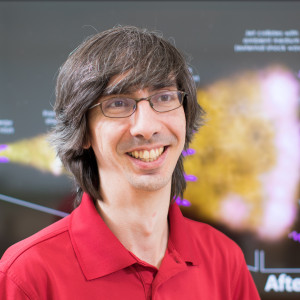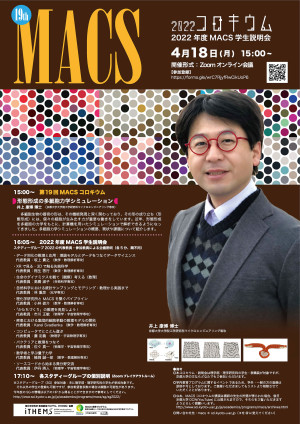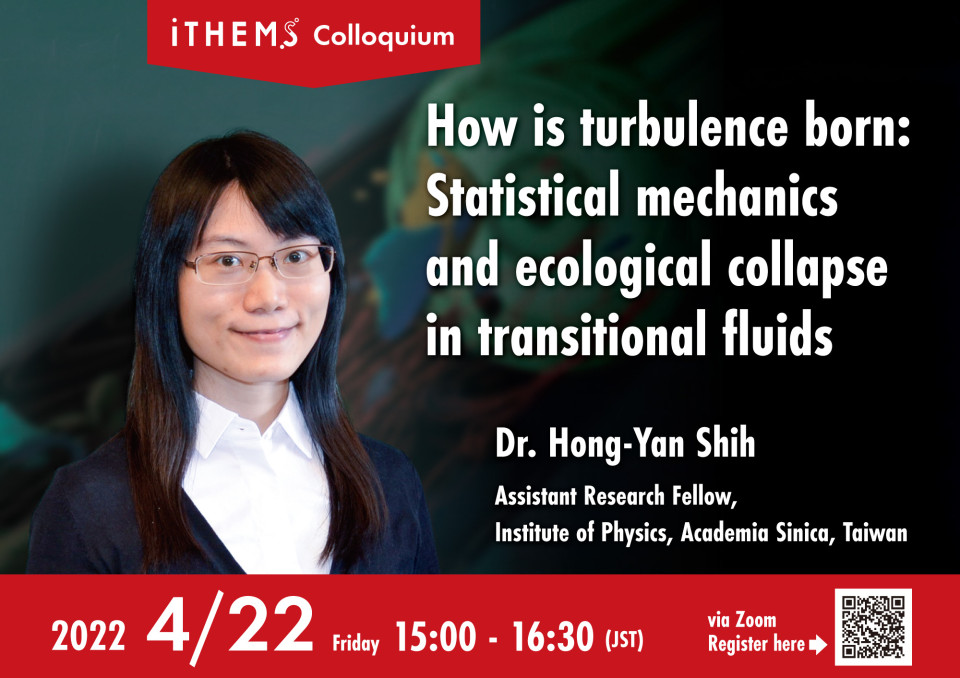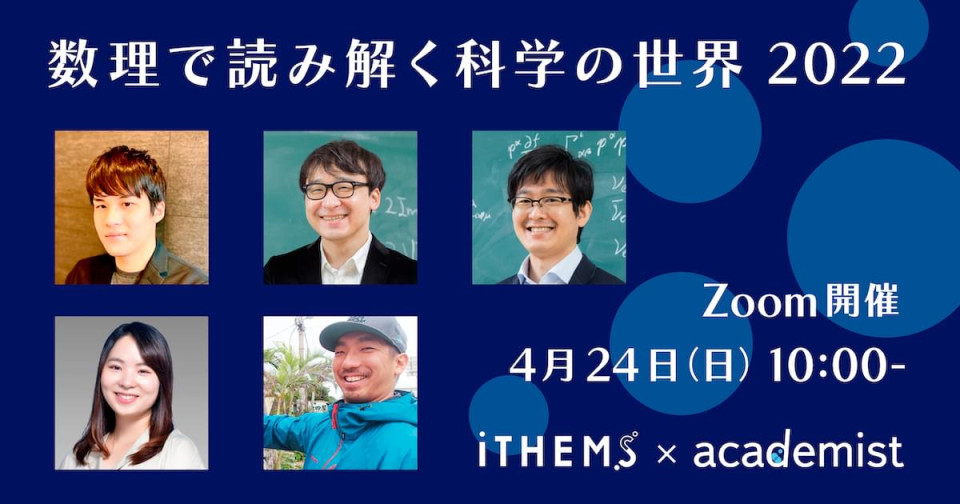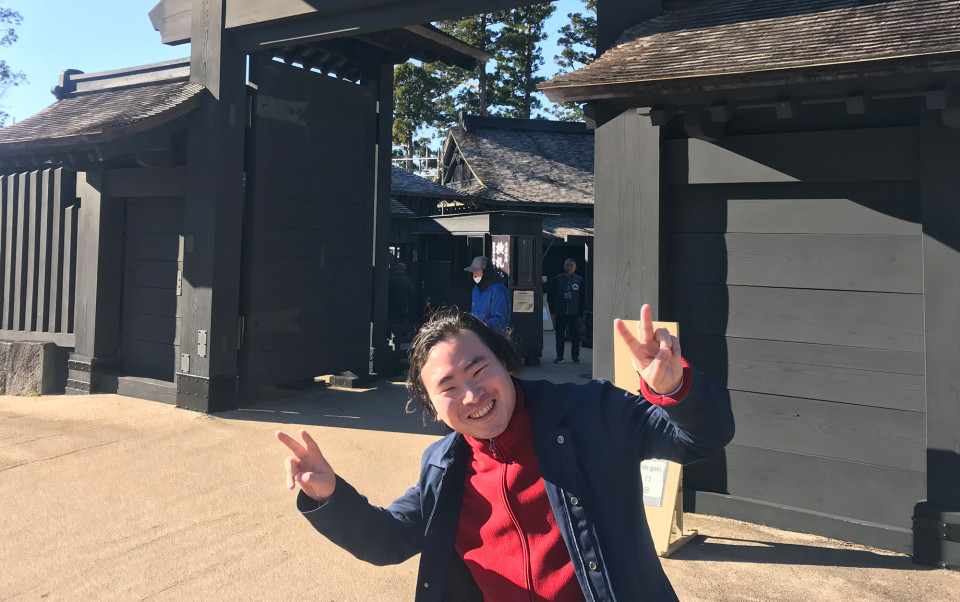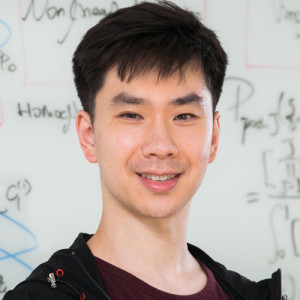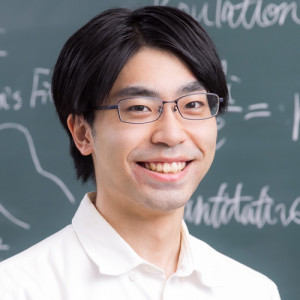Volume 193
Back to Newsletter List
Research News
The Horse: Breeding Mares Early in Life Might Lead to Early Fertility Decline
2022-04-06
Jeffrey Fawcett (Senior Research Scientist, iTHEMS) and his research was featured in an article in The Horse.
If you want to breed an older mare, you might consider how old she was when she was first bred.
According to a new study in Japanese racehorses, broodmare fertility appears to decrease slowly over the years, on a downhill slope that follows her number of breeding years—and not just her age.
“Our results suggest that the fertility of a mare is the highest at (her) first year breeding and gradually declines every year,” said Jeffrey Fawcett, PhD, a biologist and senior research scientist at RIKEN Interdisciplinary Theoretical and Mathematical Sciences Program (iTHEMS), in Saitama, Japan.
To read more, please visit the related link.
Reference
- Jeffrey A Fawcett, Hideki Innan, Takeru Tsuchiya, Fumio Sato, Effect of advancing age on the reproductive performance of Japanese Thoroughbred broodmares, Journal of Equine Science, 32, 2 (2021), doi: 10.1294/jes.32.31
Research News
RIKEN Research: Thermal electrons play key role in determining emissions from gamma-ray-burst afterglows
2022-04-06
he presence of unusually energetic gamma rays seen in some afterglows from intense gamma-ray bursts (GRBs) could be explained by a new mathematical model developed by RIKEN researchers1. This finding could help to shed light on the origin of GRBs.
A GRB is a spectacular eruption of energy produced by violent events such as the explosive death of a massive star, or the collision of two neutron stars. A GRB also shoots a jet of matter and energy into the material that surrounded the star, shocking particles such as protons and electrons and causing them to emit radiation. The emitted photons, ranging from radio waves to gamma rays, can be detected from Earth as a GRB afterglow.
The vast majority of GRB afterglow observations can be explained by current theories, which should come as no surprise: they wouldn’t be the current theories if they didn’t match reality. But the afterglows of two recent GRBs produced gamma rays with unusually high energies that strain these theories. “The surprise with these two bursts was that we had never detected photons this energetic before,” says Donald Warren of the RIKEN Interdisciplinary Theoretical and Mathematical Sciences Program (iTHEMS).
To read more, please visit the related link.
Reference
- Warren, D. C., Dainotti, M., Barkov, M. V., Ahlgren, B., Ito, H. & Nagataki, S., A semianalytic afterglow with thermal electrons and synchrotron self-Compton emission, The Astrophysical Journal 924, 40 (2022), doi: 10.3847/1538-4357/ac2f43
Upcoming Events
Lecture
Introduction to Topological Insulators: From Quantum to Classical Physics 2
April 14 (Thu) 15:00 - 17:00, 2022
Tomoki Ozawa (Associate Professor, Advanced Institute for Materials Research (AIMR), Tohoku University)
In this set of lectures, I give an introduction to topological insulators. A goal is to provide an overall understanding of basic concepts of the physics of topological insulators to mathematicians and physicists with no prior knowledge on the subject. Very roughly speaking, topological insulators are materials whose wavefunctions show nontrivial topological structure in momentum space. Materials with topologically nontrivial wavefunction in momentum space have been found to host modes which are localized at the surface (edge) of the material: a property known as the bulk-edge correspondence. The bulk-edge correspondence results in experimentally observable signature of somewhat abstract notion of topology of the wavefunction in momentum space. Originally, topological insulators were found and studied for electrons in solid-state materials, which are quantum mechanical. However, certain properties of topological insulators, including the bulk-edge correspondence, have been found to hold also for purely classical materials, such as electromagnetic waves obeying Maxwell’s equations, or waves described by Newtonian mechanics. I will try to introduce topological insulators in a way general enough to be applied to quantum as well as classical materials. In the final part of the lectures, I take this opportunity to discuss some of my own works, where I studied some relations between the two-dimensional topological insulators and Kähler geometry.
Venue: via Zoom
Event Official Language: English
Seminar
NEW WG Seminar
Light-matter control of quantum materials: From light-induced superconductivity to cavity materials
April 20 (Wed) 15:30 - 17:00, 2022
Michael Sentef (Emmy Noether Research Group Leader, Max Planck Institute for the Structure and Dynamics of Matter, Germany)
In this talk I will discuss recent progress in controlling and inducing materials properties with light [1]. Specifically I will discuss recent experiments showing light-induced superconductivity through phonon driving in an organic kappa salt [2] and its possible theoretical explanation via dynamical Hubbard U [3]. I will then highlight some recent theoretical and experimental progress in cavity quantum materials [4], where the classical laser as a driving field of light-induced properties is replaced by quantum fluctuations of light in confined geometries. Ideas and open questions for future work will be outlined.
References
- A. de la Torre, D. M. Kennes, M. Claassen, S. Gerber, J. W. McIver, M. A. Sentef, Colloquium: Nonthermal pathways to ultrafast control in quantum materials, Rev. Mod. Phys. 93, 041002 (2021), doi: 10.1103/RevModPhys.93.041002
- M. Buzzi, D. Nicoletti, M. Fechner, N. Tancogne-Dejean, M. A. Sentef, A. Georges, M. Dressel, A. Henderson, T. Siegrist, J. A. Schlueter, K. Miyagawa, K. Kanoda, M.-S. Nam, A. Ardavan, J. Coulthard, J. Tindall, F. Schlawin, D. Jaksch, A. Cavalleri, Photo-molecular high temperature superconductivity, Phys. Rev. X 10, 031028 (2020), doi: 10.1103/PhysRevX.10.031028
- J. Tindall, F. Schlawin, M. Buzzi, D. Nicoletti, J. R. Coulthard, H. Gao, A. Cavalleri, M. A. Sentef, D. Jaksch, Dynamical Superconductivity in a Frustrated Many-Body System, Phys. Rev. Lett. 125, 137001 (2020), doi: 10.1103/PhysRevLett.125.137001
- Frank Schlawin, Dante M. Kennes, Michael A. Sentef, Cavity Quantum Materials, Applied Physics Reviews Reviews 9, 011312 (2022), doi: 10.1063/5.0083825
Venue: via Zoom
Event Official Language: English
Colloquium
MACS ColloquiumSupported by iTHEMS
The 19th MACS Colloquium
April 18 (Mon) 15:00 - 17:40, 2022
Yasuhiro Inoue (Professor, Department of Micro Engineering, Graduate School of Engineering, Kyoto University)
15:00- The 19th MACS Colloquium: Talk by Prof. Yasuhiro Inoue "Multicellular Dynamics Simulation of Morphogenesis"
16:05- MACS SG information session
17:10- Individual explanation by each study group (Zoom breakout room)
Venue: via Zoom
Event Official Language: Japanese
Lecture
Introduction to Topological Insulators: From Quantum to Classical Physics 3
April 21 (Thu) 15:00 - 17:00, 2022
Tomoki Ozawa (Associate Professor, Advanced Institute for Materials Research (AIMR), Tohoku University)
In this set of lectures, I give an introduction to topological insulators. A goal is to provide an overall understanding of basic concepts of the physics of topological insulators to mathematicians and physicists with no prior knowledge on the subject. Very roughly speaking, topological insulators are materials whose wavefunctions show nontrivial topological structure in momentum space. Materials with topologically nontrivial wavefunction in momentum space have been found to host modes which are localized at the surface (edge) of the material: a property known as the bulk-edge correspondence. The bulk-edge correspondence results in experimentally observable signature of somewhat abstract notion of topology of the wavefunction in momentum space. Originally, topological insulators were found and studied for electrons in solid-state materials, which are quantum mechanical. However, certain properties of topological insulators, including the bulk-edge correspondence, have been found to hold also for purely classical materials, such as electromagnetic waves obeying Maxwell’s equations, or waves described by Newtonian mechanics. I will try to introduce topological insulators in a way general enough to be applied to quantum as well as classical materials. In the final part of the lectures, I take this opportunity to discuss some of my own works, where I studied some relations between the two-dimensional topological insulators and Kähler geometry.
Venue: via Zoom
Event Official Language: English
Colloquium
iTHEMS Colloquium
How is turbulence born: Statistical mechanics and ecological collapse in transitional fluids
April 22 (Fri) 15:00 - 16:30, 2022
Hong-Yan Shih (Assistant Research Fellow, Institute of Physics, Academia Sinica, Taiwan)
The onset of turbulence is ubiquitous in daily life and is important in various industrial applications, yet how fluids become turbulent has remained unsolved for more than a century. Recent experiments in pipe flow finally quantified this transition, showing that non-trivial statistics and spatiotemporal complexity develop as the flow velocity is increased. Combining numerical simulations of the hydrodynamics equations and an effective theory from statistical mechanics, we discovered the surprising fact that fluid behavior at the transition is governed by the emergent predator-prey dynamics, leading to the mathematical prediction that the laminar-turbulent transition is analogous to an ecosystem on the edge of extinction. This prediction demonstrates that the laminar-turbulent transition is a non-equilibrium phase transition in the directed percolation universality class, and provides a unified picture of transition to turbulence in various systems. I will also show our recent progresses on transitional turbulence, including how an extended ecological model with energy balance successfully recapitulates the spatiotemporal patterns beyond the critical point, and the determination of the critical behavior and an emergent novel phase under interactions in the experimental collaboration.
Venue: via Zoom
Event Official Language: English
Special Lecture
iTHEMS x academist Online Event "World of Mathematical Sciences 2022"
April 24 (Sun) 10:00 - 16:30, 2022
Masaki Taniguchi (Special Postdoctoral Researcher, RIKEN Interdisciplinary Theoretical and Mathematical Sciences Program (iTHEMS))
Hidetoshi Taya (Special Postdoctoral Researcher, RIKEN Interdisciplinary Theoretical and Mathematical Sciences Program (iTHEMS))
Akira Harada (Special Postdoctoral Researcher, RIKEN Interdisciplinary Theoretical and Mathematical Sciences Program (iTHEMS))
Yingying Xu (Special Postdoctoral Researcher, RIKEN Interdisciplinary Theoretical and Mathematical Sciences Program (iTHEMS))
Euki Yazaki (Postdoctoral Researcher, RIKEN Interdisciplinary Theoretical and Mathematical Sciences Program (iTHEMS))
Venue: via Zoom
Event Official Language: Japanese
Lecture
Introduction to Topological Insulators: From Quantum to Classical Physics 4
April 27 (Wed) 15:00 - 17:00, 2022
Tomoki Ozawa (Associate Professor, Advanced Institute for Materials Research (AIMR), Tohoku University)
In this set of lectures, I give an introduction to topological insulators. A goal is to provide an overall understanding of basic concepts of the physics of topological insulators to mathematicians and physicists with no prior knowledge on the subject. Very roughly speaking, topological insulators are materials whose wavefunctions show nontrivial topological structure in momentum space. Materials with topologically nontrivial wavefunction in momentum space have been found to host modes which are localized at the surface (edge) of the material: a property known as the bulk-edge correspondence. The bulk-edge correspondence results in experimentally observable signature of somewhat abstract notion of topology of the wavefunction in momentum space. Originally, topological insulators were found and studied for electrons in solid-state materials, which are quantum mechanical. However, certain properties of topological insulators, including the bulk-edge correspondence, have been found to hold also for purely classical materials, such as electromagnetic waves obeying Maxwell’s equations, or waves described by Newtonian mechanics. I will try to introduce topological insulators in a way general enough to be applied to quantum as well as classical materials. In the final part of the lectures, I take this opportunity to discuss some of my own works, where I studied some relations between the two-dimensional topological insulators and Kähler geometry.
Venue: via Zoom
Event Official Language: English
Person of the Week
Self-introduction: Tomoya Naito
2022-04-06
My name is Tomoya Naito. I joined RIKEN iTHEMS as an SPDR in April 2022, while I have participated in many activities in iTHEMS including the iTHEMS-phys study group and the iTHEMS math-phys working group so, probably, some of you have known me.
My research topics are related to computational quantum many-body problems, especially density functional theory (DFT). In principle, one can obtain all the properties of quantum many-body problems by solving the many-body Schrödinger or Dirac equation; however, it is, in practice, difficult to solve it. DFT, developed by Hohenberg, Kohn, and Sham, is one of the efficient methods to solve such problems. DFT has been applied to the study of atomic nuclei, atoms, molecules, and solids for decades, while there are still many fundamental things to be solved or understood.
My research topics are briefly divided into two parts: fundamental studies of the DFT and studies of quantum many-body problems (atomic nuclei, atoms, molecules, and solids) using DFT. Recently, I have started an astrophysical study using knowledge of nuclear physics and a study of the mathematical aspect of DFT in collaboration with iTHEMS (previous or current) members. I look forward to extending collaborations with iTHEMS colleagues!
Person of the Week
Self-introduction: Jizhou Li
2022-04-06
My name is Jizhou (G-Joe) Li. Born and raised in Beijing, got my PhD from the Washington State University, I’m now thrilled to join the RIKEN iTHEMS team as a postdoc researcher. A theoretical physicist by training, I have worked on nonlinear dynamical systems and quantum chaos during my PhD and postdoc years. After joining the RIKEN in April 2022, I will embark on a new journey in the field of computational virophysics to study the dissemination of viruses in various circumstances, as well as the interactions between the viruses and the hosts environments. Looking forward to expand my spectrum and learn from collaborators in different fields.
Person of the Week
Self-introduction: Keiichi Morita
2022-04-06
My name is Keiichi Morita, and I joined iTHEMS in April 2022 as a junior research associate / student trainee. I am now involved in a Ph.D. program at the SOKENDAI University. The main question of my research is how adaptive evolution can determine species coexistence and structures of ecological communities. I focus on rapid adaptation which can change the strength and directions of species interactions and finally affect population dynamics. I hope to understand how the evolution of an individual phenotype can affect species coexistence by formulating transient processes and finding conditions of coexistence from analysing and simulating my mathematical models. I consider analyzing experimental data and demonstrating my mathematical models. My final goal is to discover a general rule in ecology. I am looking forward to interacting with other members working with various interests in iTHEMS and finding a new direction of research out of it.
Person of the Week
Self-introduction: Makiko Nio
2022-04-07
She has been involved in precision calculations of Quantum Electrodynamic(QED), such as energy spectra of simple hydrogen-like atoms and the anomalous magnetic moments of the electron and the muon. The results of the calculations are used to determine the value of the fine-structure constant that governs any electro-magnetic phenomena. The QED results are also essential to test the Standard Model(SM) of elementary particles and to find something new beyond the SM by comparing theoretical predictions to measurements.
Paper of the Week
Week 2, April 2022
2022-04-07
Title: Ribbon Yetter--Drinfeld modules and tangle invariants
Author: Kazuo Habiro, Yuka Kotorii
arXiv: http://arxiv.org/abs/2204.02551v1
Title: Dominant Andreev Reflection through Nonlinear Radio-Frequency Transport
Author: Tingyu Zhang, Hiroyuki Tajima, Yuta Sekino, Shun Uchino, Haozhao Liang
arXiv: http://arxiv.org/abs/2204.01356v2
If you would like to cancel your subscription or change your email address,
please let us know via our contact form.
Copyright © iTHEMS, RIKEN. All rights reserved.


